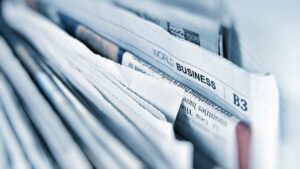‘Not knowing where to go’: Montana’s sparse landscape for alcohol detox

Montana Free Press by Mara Silvers, December 18, 2024: For one of Montana’s most common substance use disorders, medical withdrawal resources remain few and far between.
Thirty-three-year-old Whitefish resident Melanie Seefeldt has decided to stop drinking before. But, like many Montanans, Seefeldt knows a core truth about alcohol addiction. Wanting to stop is the easy part.
For many, the excruciation comes later. When she prepares to extricate alcohol from her body, Seefeldt ticks through a very short list of strategies.
She can taper her alcohol intake on her own, with the hope of avoiding the deliriousness, tremors and blackouts that can accompany withdrawal. She can find a doctor willing to prescribe take-home medications to manage her symptoms, or an inpatient rehab facility that takes her insurance.
If those options don’t pan out, she could also turn to the nearest hospital emergency department. But past experience has taught her a painful lesson: If her symptoms aren’t severe enough, she might be turned away.
Seefeldt, a mother and small-business owner, has tried most of those avenues before, over years of trying to control her addiction. She’s achieved long stretches of sobriety that improved her health, stabilized her life and helped her parent her young son. But, too often, Seefeldt has found Montana’s alcohol detox landscape deeply inadequate for the disease she lives with, amounting to an obstacle course full of trap doors, holding patterns and dead-ends.
“I’ve personally dealt with that struggle — needing to stop and not knowing where to go,” Seefeldt recalled. “You can feel so fucking stuck, and also ashamed.”
By now, Seefeldt knows which parts of the health care system might help her bridge the daunting initial gap between drinking and sobriety. But she has also continued drinking when the hurdles to detox and treatment have felt too high — especially the prospect of enduring hours and days of physical distress sparked by the absence of alcohol.
In an October interview, Seefeldt recounted a friend’s recent reaction when facing those withdrawal symptoms — a circumstance that Seefeldt has also experienced firsthand.
“She couldn’t get through it,” Seefeldt said. “So she started drinking again.”




